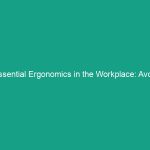Introduction
Good morning team! Today, we’re going to discuss a critical topic that directly impacts our Safety and well-being at work: Must-Know Strategies for Combustible Dust Explosion Prevention: Housekeeping & Ventilation. Understanding these strategies is vital not just for compliance, but to ensure that we all go home safe at the end of the day.
Combustible dust can pose a significant risk in various industries, leading to potential explosions if not properly managed. Ignoring proper housekeeping and ventilation practices can lead to severe consequences, including injuries, fatalities, and damage to our facilities. So, let’s dive in and explore the Best Practices we can implement in our daily operations.
Understanding Combustible Dust Explosion Prevention
Combustible dust refers to fine particles that can ignite and cause explosions when suspended in air. This includes materials like wood, metal, plastic, and many others. The importance of preventing dust explosions cannot be overstated; these incidents can lead to devastating injuries and significant property damage.
Many employees may underestimate the risks associated with combustible dust, believing that it only affects specific industries. However, dust Hazards can be present in any Environment where materials are processed, handled, or stored. It’s crucial to remain vigilant, regardless of our specific roles and responsibilities.
Key Hazards, Risks, and Safety Considerations
Identifying the hazards associated with combustible dust is the first step toward prevention. Here are some key risks:
- Dust Accumulation: Excessive dust buildup can lead to an explosive atmosphere.
- Inadequate Ventilation: Poor air circulation can prevent dust from dispersing, increasing the risk of ignition.
- Ignition Sources: Sparks, flames, or even static electricity can act as ignition sources for dust explosions.
Real-world consequences of ignoring these hazards can be dire. For instance, in 2008, a sugar dust explosion in a Georgia plant resulted in 14 fatalities and numerous injuries. Such tragedies highlight the importance of rigorous dust management strategies.
Best Practices, Procedures, & Actionable Advice
To effectively prevent combustible dust explosions, we must adopt specific Best Practices in housekeeping and ventilation:
Housekeeping Procedures
Good housekeeping is essential in any workplace, but it becomes even more critical in environments where combustible dust is a concern. Here are practical tips to follow:
- Regular Cleaning: Schedule routine cleaning sessions to remove dust accumulation. Use appropriate methods such as vacuuming with explosion-proof equipment.
- Immediate Spill Response: Clean up any dust spills immediately to prevent buildup.
- Designated Areas: Designate specific areas for dust-generating activities and ensure these areas are cleaned after use.
Ventilation Practices
Proper ventilation is crucial to ensure that any dust particles are diluted and removed from the air. Here are some actionable tips:
- Local Exhaust Ventilation: Implement local exhaust systems to capture dust at the source before it can escape into the work environment.
- General Ventilation: Ensure that general ventilation systems are adequately designed to provide sufficient air exchange to dilute dust concentrations.
- Regular Maintenance: Maintain ventilation systems to ensure they operate efficiently. Regular inspections can help prevent failures.
Regulations, Standards, and Compliance
Compliance with safety Regulations is not just a legal obligation; it’s a moral responsibility to protect ourselves and our coworkers. Familiarize yourself with relevant Standards such as:
- OSHA’s General Industry Standards (29 CFR 1910.22 and 29 CFR 1910.272)
- NFPA 652: Standard on the Fundamentals of Combustible Dust
Adhering to these regulations helps ensure a safer work environment and can prevent catastrophic incidents from occurring. Remember, safety is a shared responsibility, and we all play a role in compliance.
Employee Engagement & Discussion
As we wrap up, I want to open the floor for discussion. Let’s think about some questions:
- What safety challenges have you experienced related to combustible dust?
- How can we improve our current housekeeping and ventilation practices?
- What additional resources would help you feel more equipped to handle dust hazards?
Your input is invaluable in creating a safer workplace. Sharing experiences can enhance our collective knowledge and lead to better safety practices.
Conclusion & Key Takeaways
To sum up, preventing combustible dust explosions is a serious responsibility that we all share. By implementing effective housekeeping and ventilation practices, we can significantly reduce the risk of accidents. Remember, the key points to take away are:
- Regular cleaning and immediate spill response are crucial.
- Proper ventilation reduces dust concentration and minimizes explosion risks.
- Compliance with safety standards protects us all.
Thank you for your attention today. Let’s commit to prioritizing safety and ensuring that we all return home safe and sound. Your safety matters!


